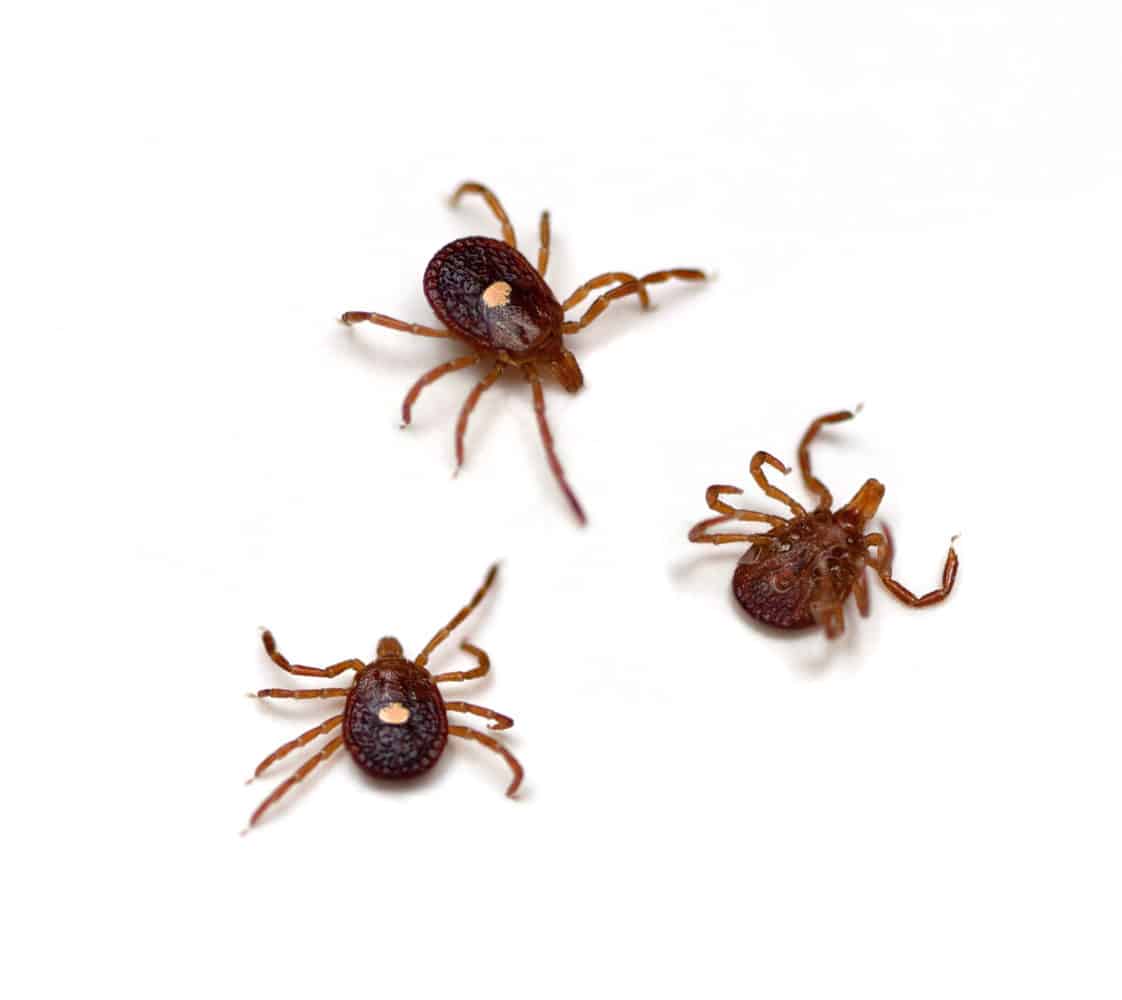Lone Star Ticks
Lone star ticks are named for their single white spot on the backs of the adult females. The spot can vary from cream to bronze/gold and can even appear iridescent at close range. Females are about 1/4 inch long, and 1/2 inch or longer when fully engorged. Adult males have light colored patterns on the outside of their bodies.
Tick problem? Our HomeCare Vector Program is proven to effectively reduce tick, flea, and mosquito populations!
What do Lone Star Ticks do?
Lone star ticks feed on the blood of their host. The hosts can range from small animals like chipmunks and mice, all the way up to deer and humans. Unlike the other three types of local ticks, lone star ticks have been known to move long distances in pursuit of hosts and “hunt” them.
Like the other ticks in New England are, lone star ticks are three-host ticks. This means that they need to feed on a different host at each level of development in order to complete their lifecycle. The three levels are larva, nymph, and adult.
When are Lone Star Ticks a Problem?
Adult lone star ticks are most active from mid-March through late June. Nymphs are most active mid-May through late July. Larvae are most active July through September.
Where do Lone Star Ticks Live?
Most lone star ticks are found in the southeastern United States. However, their range also extends north, and includes southern and coastal Maine. They aren’t as predominant as other species found in New England, but they are being found more than in the past. They tend to be found near rivers and streams where animals rest. They also prefer shrub undergrowth and dry, forested areas.
Why are Lone Star Ticks a Pest?
Lone star ticks spread disease in humans and animals. They are especially known for spreading alpha-gal, which causes a red meat allergy in humans.
Can you Avoid Lone Star Ticks?
If you take precautions, you can reduce the risk of contracting a tick-borne illness.
- Wear long sleeves and pants, and tuck pantlegs into your socks to keep ticks from attaching to your skin.
- Use a bug repellent containing DEET, picaridin, or oil of lemon eucalyptus (OLE) on your skin (follow the label instructions) or wear clothes treated with permethrin.
- Shower and do tick checks after you’ve been outside.
- If you do find a tick attached to you, use tweezers or a tick spoon to pull it straight out of the skin (don’t leave any tick mouthparts behind).
Ready to Schedule a Service?

